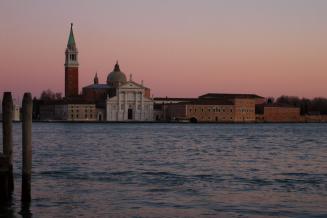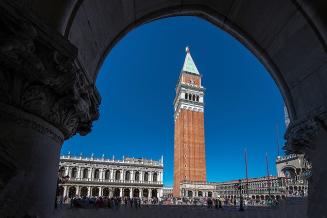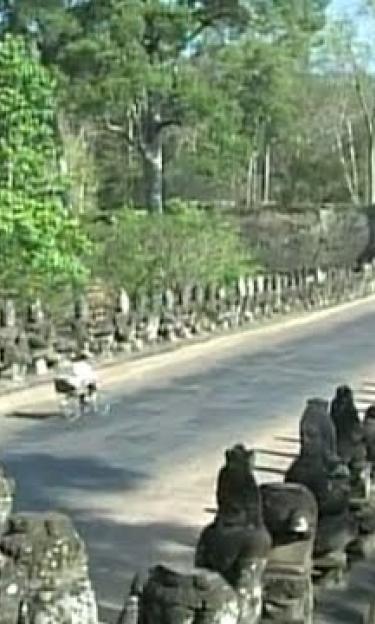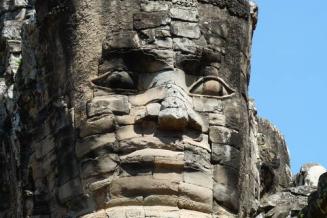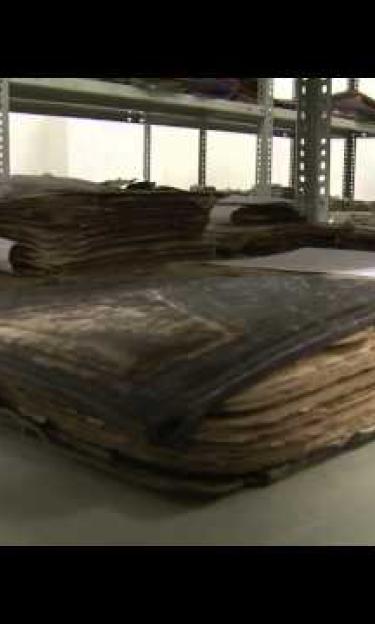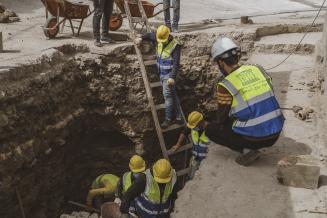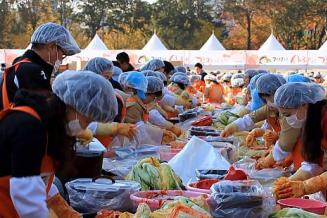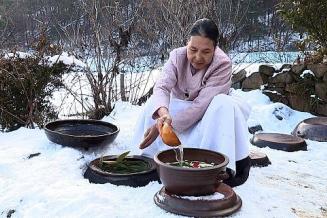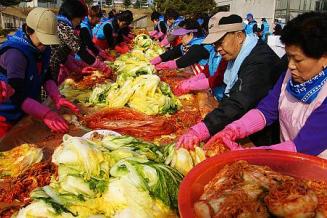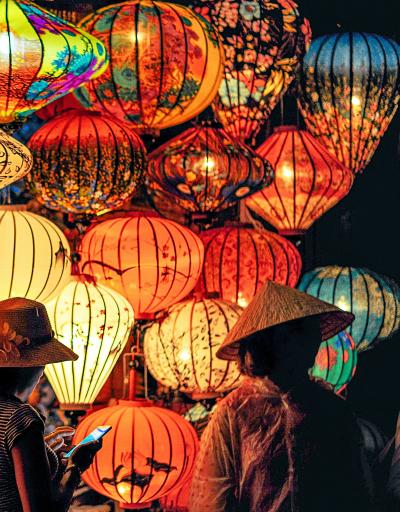
Cultural heritage: 7 successes of UNESCO’s preservation work
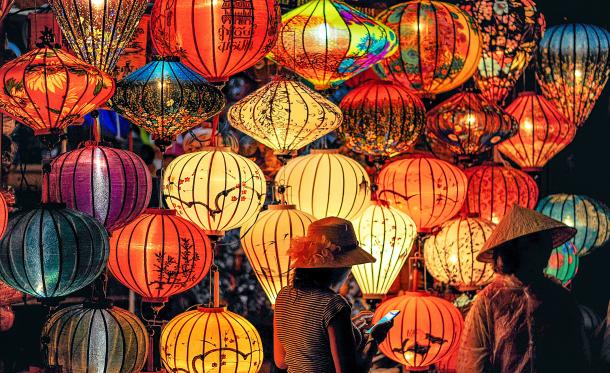
The power of preserving cultural heritage to build a better world
Why do we go to great lengths to preserve culture and make it bloom? Culture is a resource for the identity and cohesion of communities. In today’s interconnected world, it is also one of our most powerful resources to transform societies and renew ideas. It is UNESCO’s role to provide the tools and skills we need to make the most of its ultimate renewable energy.
Historical landmarks, living heritage and natural sites enrich our daily lives in countless ways, whether we experience them directly or through the medium of a connected device. Cultural diversity and creativity are natural drivers of innovation. In many ways, artists, creators and performers help us change our perspective on the world and rethink our environment. These are precious assets to respond to current global challenges, from the climate crisis to the COVID-19 pandemic.
The notion of culture has greatly evolved over the last 75 years. UNESCO’s actions over the past decades bear witness to the many ways in which humanity tried to understand how culture can strengthen the sense of who we are – from the awareness of the necessity to protect heritage from destruction at the end of World War II, to the launch of international campaigns to safeguard World Heritage sites and the concept of living and intangible heritage, a focus on creative economy and the need to sustain cultural jobs and livelihoods. Our relationship with culture has deeply evolved over the last century. If we look into the past, we might be better prepared to tackle further changes ahead.
The United States will be participating in an international effort which has captured the imagination and sympathy of people throughout the world. By thus contributing to the preservation of past civilizations, we will strengthen and enrich our own.
Abu Simbel – We do not have to choose between the living and the dead

A few minutes before sunrise, thousands of visitors line up inside the temple of Abu Simbel, holding their breath. They are about to witness a rare phenomenon that has taken place twice a year for the last 3,000 years. Every February and October at 6:29 am, the light of the rising sun pierces through the narrow entrance. The rays penetrate over 70 metres deep across the giant pillared hall up to the inner sanctuary, illuminating the statue of the man who built the temple during the 13th century BC, Pharaoh Ramses II.
Carved out of a rocky hill, the Temple of the Rising Sun had been conceived to show the might of Egypt’s greatest pharaoh to the Nubian people in the Upper Nile. Over time, the great temple and the smaller buildings became covered in sand and lay forgotten for centuries, until their rediscovery in 1813. The supreme example of ancient Egypt’s knowledge of astronomy and the skill of its architects could be admired again.
But just over a century later, the southernmost relics of this ancient human civilization were threatened with underwater oblivion and destruction by the rising waters of the Nile following the construction of the Aswan High Dam. The construction of the Dam was meant to develop agriculture as well as Egyptian independence and economy, and triggered a global debate that has fuelled media front pages and discussions ever since: should we have to choose between the monuments of the past and a thriving economy for the people living today? Why should people care for ancient stones and buildings when so many people need food and emergency assistance?
In the course of an unprecedented safeguarding campaign to save the temples of Egypt, UNESCO demonstrated that humanity does not have to sacrifice the past to thrive in the present – quite the opposite. Monuments of outstanding universal value help us understand who we are and also represent massive opportunities for development. Two millennia after a Greek author and scientist drew the famous list of the world’s seven wonders, the very notion of World Heritage came to life.
The race against time began in 1964, when experts from 50 nations started working together under the coordination of UNESCO in one of the greatest challenges of archaeological engineering in history. The entire site was carefully cut into large blocks, dismantled, lifted and reassembled in a new location 65 metres higher and 200 metres back from the river, preserving it for future generations.

Today, the four majestic statues that guard the entrance to the great temple stare at the river and the rising sun every day. As they did 3,000 years ago. The success of the international cooperation to save Abu Simbel raised awareness about the fact that all over the world there are places of outstanding universal value. Just like the Nile valley temples, they must be protected from many threats such as armed conflict, deliberate destruction, economic pressure, natural disasters and climate change.
The World Heritage Convention was adopted in 1972 as the most important global instrument to establish this notion, bringing all nations together in the pursuit of the preservation of the World’s Natural and Cultural Heritage. With its 194 signatory Member States, it is today one of the world’s most ratified conventions.
How is a site inscribed on the UNESCO World Heritage List?
For a site to be inscribed on the UNESCO World Heritage List, it must first be nominated by the country where it is located. The nomination is examined by international experts who decide whether the inclusion is justified. Finally, the World Heritage Committee, a body of 21 UNESCO elected Member States, takes a vote.
Venice – Can the safeguard of cultural heritage and global tourism coexist?
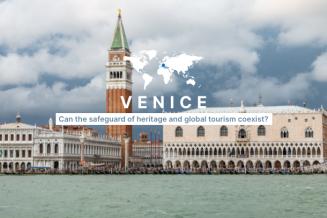
Launched only a few years after the Nubian temples initiative, the safeguarding campaign for Venice was a response to various challenges including the rising waters and the explosion of global tourism.
Stepping outside the railway station early on an autumnal morning, visitors are met with the view of the chilly air colliding with the water, forming a thick, soft blanket of fog over the Grand Canal, the ‘main street’ of Venice. The church of San Simeone Piccolo, with its oversized dome and slender neoclassical columns, and the neighbouring buildings appear to be floating on the water of the lagoon. It’s a sight that has welcomed millions of visitors from all over the world since the heydays of the Serenissima, when the city ruled as one of Europe’s economic superpowers.
Yet, the breath-taking beauty that inspired countless painters, writers and artists over the centuries remains fragile and at risk of being lost forever. Like the Abu Simbel temples, the city’s survival is threatened by rising water levels. The inexorable increase in sea level has caused flooding to become a regular occurrence. Humidity and microorganisms are eating away the long wooden piles that early dwellers drove deep into the muddy ground of the lagoon to build the first foundations of Venice, 1,600 years ago.
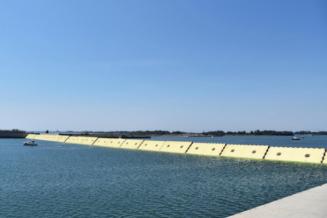
After 1966, the year of the worst flooding in Venice’s history, UNESCO and the Italian Government launched a major campaign to save the city. An ambitious project involving giant mobile flood gates was undertaken to temporarily isolate the lagoon from the high tides and protect the lowest areas from flooding. Thirty years later there is unanimous agreement on the successful results both of the technical achievements and international cooperation.
But Venice still needs attentive care, and its continued survival calls for unflagging vigilance. The city remains threatened on several fronts – mass tourism, the potential damage of subsequent urban development and the steady stream of giant cruise ships crushing its brittle foundations.
International mobilization and pressure around the status of Venice led to the Italian Government’s decision in 2021 to ban large ships from the city centre, as a necessary step to protect the environmental, landscape, artistic and cultural integrity of Venice. This decision came a few days after UNESCO announced its intention to inscribe the city on its World Heritage in Danger list. Until a permanent big cruise docking place is identified and developed, liners will be permitted to pull up in Marghera, an industrial suburb of Venice. Such decisions illustrate the great complexity of protecting historic cities and cultural heritage urban centres, which in this particular situation called for tailor-made measures and techniques different from those implemented for the safeguarding of the fabled Egyptian temples.
If every museum in the New World were emptied, if every famous building in the Old World were destroyed and only Venice saved, there would be enough there to fill a full lifetime with delight. Venice, with all its complexity and variety, is in itself the greatest surviving work of art in the world.

Angkor – A successful example of longstanding international cooperation
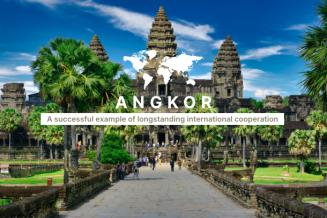
Deep in the forests of Cambodia, in the Siem Reap Province, the five lotus-flower-shaped towers of majestic Angkor Wat soar towards the sky. When approaching from the main gate, the vast scale of the temple and the precise symmetry of the buildings are awe inspiring. This is the world's largest religious monument.
Angkor Wat was part of a sprawling city as big as London, the heart of an empire that between the 9th and 15th centuries extended from southern Vietnam to Laos, and from the Mekong River to Eastern Myanmar. By around 1500 A.D., the Khmer capital was abandoned, most likely after heavy floods and lengthy droughts. Its temples, buildings and complex irrigation network were swallowed by the surrounding forests and lay hidden until their rediscovery in 1860.
By the early 1990s, the site was under major threat, with many of the temples at high risk of collapse and several sites looted. Conservation work at Angkor had not been possible since the outbreak of the civil war, the rise of the Khmer Rouge regime and the following civil unrest.
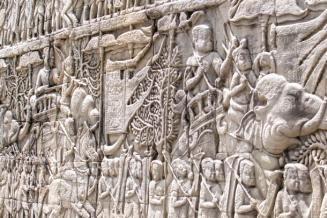
Angkor Wat’s inclusion in UNESCO’s World Heritage List in 1992 marked a milestone in the country’s recovery after years of conflict. The UNESCO-backed preservation of the temples aimed to assist in nation-building and national reconciliation. The action of the International Coordinating Committee (link is external) (ICC-Angkor) for the safeguarding and development of this exceptional cultural site is a striking example of international solidarity and testifies to one of UNESCO's most impressive achievements for heritage. Thirty countries and an ad hoc experts group for scientific, restoration and conservation projects were brought together under an innovative approach, closely linking safeguarding operations to sustainable development efforts.
In 25 years, Angkor has thus become a living laboratory demonstrating the potential of sustainable tourism and crafts, with the mobilization of local communities for social cohesion in 112 villages. The gigantic site now supports 700,000 inhabitants and attracts some five million visitors whose flow must be managed each year. The park authorities are carrying out several projects aimed at improving the lives of communities through the implementation of sustainable tourism that respects local sensitivities. The removal from UNESCO’s List of World Heritage in Danger just fourteen years later is a credit to the Cambodian people.
The fact that a project of such magnitude was successfully carried out in a country emerging from more than two decades of conflict in 1992 is a testament to the potential of the World Heritage Convention and the international solidarity led by UNESCO.
Walking through the temple, I saw reminders of the prosperous civilization that built it: hundreds of beautiful figures carved into the walls telling the stories of these ancient people; wide galleries they must have prayed in; long hallways lined with pillars they must have walked down.
No one knows for sure what caused the empire to abandon this temple and the surrounding city, but in the 15th century almost everyone left. Trees grew over the stones. Only Buddhist monks stayed behind to care for — and pray in — the hidden temples.
But that didn’t stop pilgrims and visitors from continuing to journey here to take in these incredible structures. And now, centuries later, I couldn’t be more thankful to count myself as one of these visitors
Mostar – Symbols do matter, in war and peace
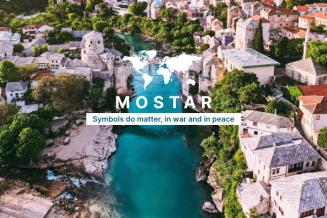
It’s the end of July in Bosnia-Herzegovina. Peak summer means an influx of tourists to the cobbled alleys of Mostar. The cosy medieval town has a long, rich history marked by the peaceful coexistence of three communities: Muslim Bosniaks, Orthodox Serbs and Catholic Croats. Once they arrive in town, visitors from all over the world make a beeline for Mostar’s most emblematic monument, the Old Bridge.
A masterpiece of Ottoman architecture, Stari Most – as it’s known locally – is a symbol of the different communities that have existed side-by-side in the area. Since the 16th century, the bridge had brought them together across the Neretva river – until the Bosnian war. The bridge was a symbol of unity between the Bosnian community (Muslim), in the east of the city, and the Croats and Serbs to the west. The bridge of Mostar (of Ottoman, therefore Muslim origin) served as a link between all these communities – as a pedestrian bridge, it had no military or strategic value. Its destruction in 1993 was only meant to force the communities to separate, to deny their mixing with their neighbours. The bridge was in ruins and, with it, the values of peace and understanding this centuries-old structure had embodied.

Five years later, UNESCO coordinated a reconstruction project to rebuild the Old Bridge. Despite the scars of the war that are still visible today on the city walls, the reconstructed bridge has now become a symbol of reconciliation and post-conflict healing.
Today, the crowds jam the street to watch the traditional diving contest from the top of the bridge, a long-held custom resumed once Stari Most was restored to its former glory. Every July, young people of Mostar’s three communities compete with courage by jumping into the river 29 metres below, just like they did before the war.
For over four years after the ceasefire, former enemies worked together to retrieve the stones from the riverbed and rebuild their former symbol of friendship. Reconstructed in 2004 and inscribed on UNESCO’s World Heritage list in 2006, Stari Most today is a bridge between a common past and a common future. It is certainly not enough to rebuild a bridge to restore confidence and rebuild peace in a war-torn society. But it certainly matters to care for the symbols of peace.
I was in my office, working to the sound of mortar fire, when we heard the cries in the street – cries that the bridge had fallen. And what happened then was so impressive that I will never forget it. Everyone came out to see. Grenades and bombs were falling everywhere, but still they came out of their hiding places: young and old, weak and strong, Muslim and Christian, they all came, all crying. Because that bridge was part of our identity. It represented us all.
Timbuktu – When warlords target heritage, peacemakers respond with more heritage
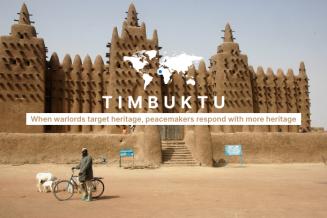
Sitting at the gateway to the Sahara Desert, Timbuktu conjures images of a mythical city at the end of the world, where Arab and African merchants would travel from afar to trade salt, gold, cattle and grain. In the English language, the city in northern Mali has come to represent a place far away. Undaunted, caravans still ply the cross-desert route and come to the city several times a year. They carry rock salt extracted from the northern Sahara, just like their ancestors did for centuries.
In its heyday, during the 16th century, the city had 100,000 inhabitants, as its mosques and holy sites played an essential role in the spread of Islam in Africa. The city became an important centre of learning in Africa and its libraries the repository of at least 700,000 historical manuscripts on art, science and medicine, as well as copies of the Qur’an. These manuscripts, written in ornate calligraphy, bear witness to the richness of African history and intellectual life.
During the conflict of 2012–2013, more than 4,000 of the 40,000 manuscripts kept at the Ahmed Baba Institute were lost. Some were burnt or stolen, while more than 10,000 remained in a critical condition. The inhabitants of Timbuktu helped save their precious heritage by secretly spiriting away more than 300,000 manuscripts to the capital, Bamako. Other texts were sheltered between mud walls or buried. Although protected from immediate destruction, the manuscripts are now preserved in conditions that may not safeguard them for future generations.
To help preserve Timbuktu’s cultural heritage and encourage reconciliation, UNESCO has been supporting the local communities to take part in ancient manuscript conservation projects and ensure their lasting preservation for humanity.
UNESCO has coordinated the work to rebuild the fourteen mausoleums inscribed on the World Heritage List, as well as the Djingareyber and Sidi Yaha mosques, that were deliberately destroyed by armed groups during the conflict.

The reconstruction of Timbuktu’s devastated cultural heritage aimed to foster reconciliation among communities and restore trust and social cohesion. An important aspect of the project was the drive to include the reconstruction of the mausoleums in an overall strategy aimed at revitalizing building traditions and ensuring their continuity, through on-the-job training activities and conservation projects.
To ensure the rebuilt shrines matched the old ones as closely as possible, the reconstruction work was checked against old photos and local elders were consulted. Local workers used traditional methods and local materials, including alhor stone, rice stalks and banco – a mixture of clay and straw.
The destruction of the mausoleums of Timbuktu has been a shock, and a clear turning point revealing the importance taken of culture and heritage in modern conflicts fuelled by violent extremism and fundamentalist ideologies. It has shown how strongly fundamentalists are willing to destroy other Islamic cultures, and any other vision which differs from their own. Similar direct destruction of Islamic, pre-Islamic, Christian or Jewish heritage, has then been seen in Iraq and Syria. The need to restore heritage has become far more than a mere cultural issue – it has become a security issue, and a key component for the resilience and further cohesion of societies torn by conflicts.
At present, the monuments in Timbuktu are living heritage, closely associated with religious rituals and community gatherings. Their shape and form have always evolved over time both with annual cycles (that of the rain and the erosion of the plastering); that of regular maintenance (every three to five years); repairs of structural pathologies, often adding buttresses; and at times more important works, including extensions and raising of the roof structure. How to take that into account while trying to guide and assist the local people in their self-capacity, their resilience in keeping their heritage as they have done for over 600 years? What should be done and to what extent? Who should be responsible for what? These are tricky questions of heritage preservation, far beyond the mere inscription of a site on the famous World Heritage list.
Salt comes from north, gold from south and silver from the land of Whites, but the Word of God, the famous things, histories and fairy tales, we only find them in Timbuktu.
Preserving cultural identity and Korean traditions: The bond of living heritage
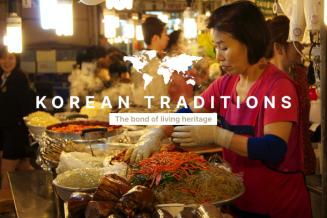
It’s the end of November in the countryside near Jeonju, the capital of the North Jeolla Province. The weather is getting chilly and winter is just a couple of weeks away.
It’s time to prepare for the long, icy-cold season. It’s time to make kimchi.
The Republic of Korea’s staple food is a side dish of salted and fermented vegetables that makes its appearance at every meal. It’s not just the country’s emblematic dish: its preparation (kimjang) is a community event.
Housewives monitor weather forecasts to determine the most favourable date and temperature for preparing kimchi. Entire families, friends and neighbours gather together to make it. The process is rather laborious and requires many hands to process the large quantities of vegetables required to last throughout the winter months. They all work together, exchange tips and tighten their relationships through kimjang. Families take turns making kimchi to form closer bonds.
Today, the entire village will get together in one of the houses for the occasion. Together, they will wash the napa cabbage that was pickled in salt the night before and mix in the seasonings that will give kimchi its unique sour-and-spicy flavour. The specific methods and ingredients are transmitted from mother to daughter so that kimjang culture is preserved through the generations.
Since 2013, kimjang has been included in UNESCO’s Representative List of the Intangible Cultural Heritage of Humanity as an important part of Korean culture, embodying the country’s cooperative and sharing team spirit. Kimjang is a vital cultural asset of a community and worth preserving and celebrating for the rest of humanity. Even though there may be regional differences in the preparation of kimchi, it transcends class, regional and even national borders.
Cultural practices often precede the instauration of national borders and the start of conflict among its citizens. Shared cultural practices may even be a path to reconciliation.

Such hopes materialized in 2018, when the Democratic People’s Republic of Korea and the Republic of Korea decided to work together to submit a joint submission for traditional wrestling as an element of UNESCO’s Representative List of the Intangible Cultural Heritage of Humanity.
Ssirum/Ssireum (wrestling) is a physical game and a popular form of entertainment widely enjoyed all across the Korean peninsula. In the North, two opponents try to push each other to the ground using a satpa (a fabric strap connecting the waist and leg), their torso, hands and legs. Ssirum/Ssireum is distinguished by the use of the satpa and the awarding of a bull to the winner. In the South, Ssirum/Ssireum is a type of wrestling in which two players wearing long fabric belts around their waists and one thigh grip their opponents’ belt and deploy various techniques to send them to the ground. The winner of the final game for adults is awarded an ox, symbolizing agricultural abundance, and the title of ‘Jangsa’.
As an approachable sport involving little risk of injury, Ssirum/Ssireum also offers a means to improve mental and physical health. Koreans are widely exposed to Ssirum/Ssireum traditions within their families and local communities: children learn the wrestling skills from family members; local communities hold annual open wrestling tournaments; its instruction is also provided in schools.

Following UNESCO’s mediation, the two States Parties agreed for their respective nomination files to be jointly examined by the Intergovernmental Committee for the Safeguarding of Intangible Cultural Heritage in November 2018. UNESCO welcomed this initiative of regional cooperation and, through a historic decision, inscribed "Traditional Korean wrestling (Ssirum/Ssireum)" on the Representative List of the Intangible Cultural Heritage of Humanity, as a joint inscription from the Democratic People’s Republic of Korea and the Republic of Korea. While the Lists of the Convention include several examples of multinational nominations prepared by several States (from couscous to the art of falconry and the Mediterranean diet), the coming together of the two States Parties for the joint inscription of Korean traditional wrestling by the Committee is unprecedented. It marks a highly symbolic step on the road to inter-Korean reconciliation. It is also a victory for the longstanding and profound ties between both sides of the inter-Korean border, and for the role cultural diplomacy may have in international relations.
It was the time when the women would gather and gossip. There would be matchmaking. There would be some marriages that came about during the time of kimchi making.

Promoting culture in a post-COVID-19 world
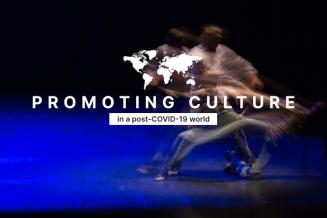
The cultural and creative industries are among the fastest growing sectors in the world. With an estimated global worth of US$ 4.3 trillion per year, the culture sector now accounts for 6.1 per cent of the global economy. They generate annual revenues of US$ 2,250 billion and nearly 30 million jobs worldwide, employing more people aged 15 to 29 than any other sector. The cultural and creative industries have become essential for inclusive economic growth, reducing inequalities and achieving the goals set out in the 2030 Sustainable Development Agenda.
The adoption of the 2005 Convention for the Protection and Promotion of the Diversity of Cultural Expressions was a milestone in international cultural policy. Through this historic agreement, the global community formally recognized the dual nature, both cultural and economic, of contemporary cultural expressions produced by artists and cultural professionals. Shaping the design and implementation of policies and measures that support the creation, production, distribution of and access to cultural goods and services, the 2005 Convention is at the heart of the creative economy.
Recognizing the sovereign right of States Parties to maintain, adopt and implement policies to protect and promote the diversity of cultural expression, both nationally and internationally, the 2005 Convention supports governments and civil society in finding policy solutions for emerging challenges.
Based on human rights and fundamental freedoms, the 2005 Convention ultimately provides a new framework for informed, transparent and participatory systems of governance for culture.

A constant rethinking of culture and heritage
The history of UNESCO bears witness to the deep transformation of the concept of culture over the past decades. From global Conventions mostly dealing with building and stones in the 60’s and 70’s, the international cooperation opened new fronts for the protection and promotion of culture, including intangible cultural heritage, cultural diversity and creative economy. The definition of "culture" was spearheaded by the committee led by former UN Secretary-General Javier Pérez de Cuellar and the Mondiacult Conference in 1982. In 2022, the global Mondiacult conference is expected to take stock of progress made in the past 40 years in cultural policies, and re-imagine its future in a post-COVID-19 world.
Have a look at these World Heritage sites
The 30,000-kilometre-long road system was built by the Inca Empire across mountains, valleys, rainforests and deserts to link the Inca capital, Cuzco, with distant areas of the empire, from the Amazon to the Andes. Thanks to its sheer scale, Qhapaq Ñan is a unique achievement of engineering skills, highlighting the Incas' mastery of construction technology.
The granting of World Heritage status in 2019 has made its trail – which every year sees thousands of visitors on their way to the area’s archaeological sites such as Machu Picchu in Peru – eligible for much-needed restoration funds.
Borobudur is the largest Buddhist temple in the world and one of the great archaeological sites of Southeast Asia. This imposing Buddhist temple, dating from the 8th and 9th centuries, is located in central Java. It was built in three tiers: a pyramidal base with five concentric square terraces, the trunk of a cone with three circular platforms and, at the top, a monumental stupa. The walls and balustrades are decorated with fine low reliefs, covering a total surface area of 2,500 m2. Around the circular platforms are 72 openwork stupas, each containing a statue of the Buddha. The monument was restored with UNESCO's help in the 1970s.
This cultural landscape was simultaneously inscribed on the World Heritage List and the List of World Heritage in Danger in 2003. The property is in a fragile state of conservation, having suffered from abandonment, military action and dynamite explosions. Parts of the site are inaccessible due to the presence of anti-personnel mines.


